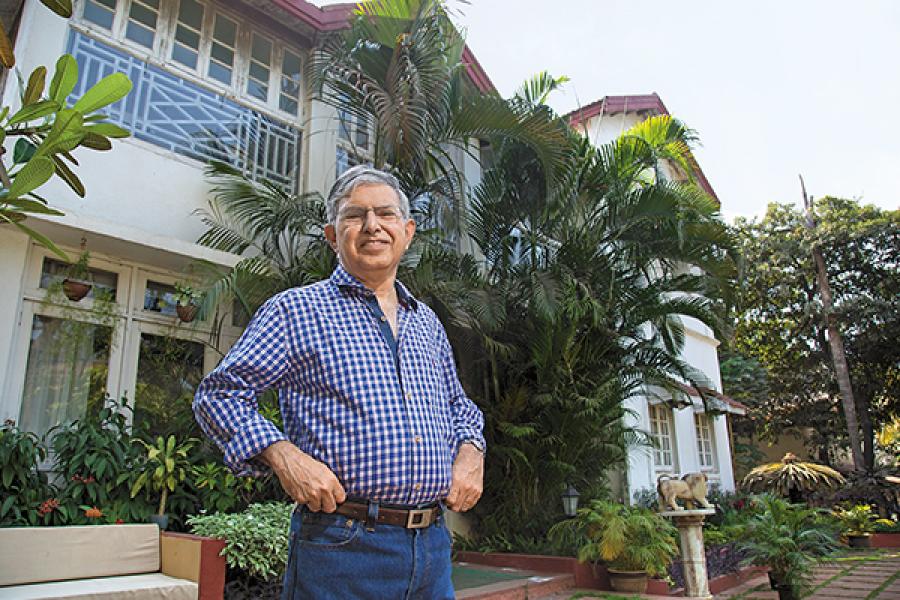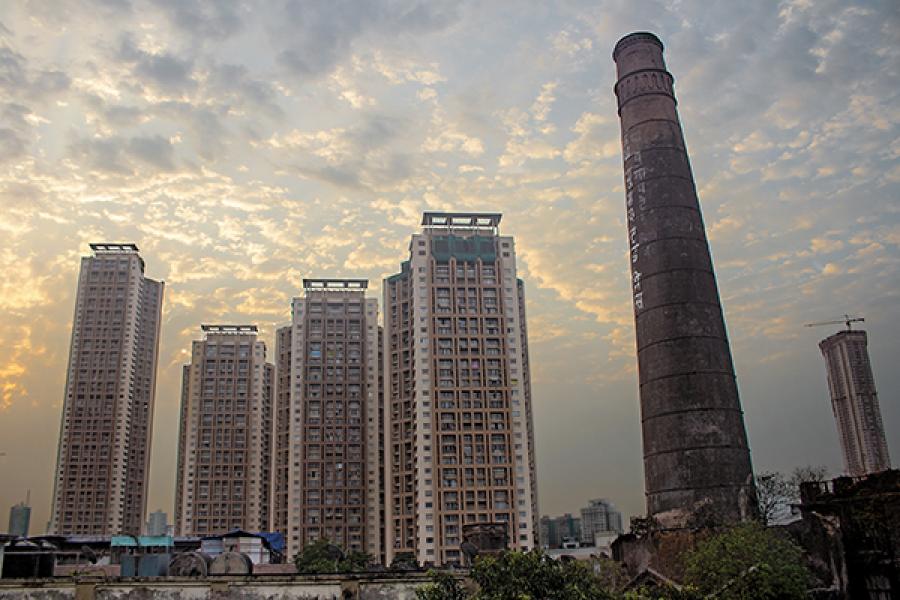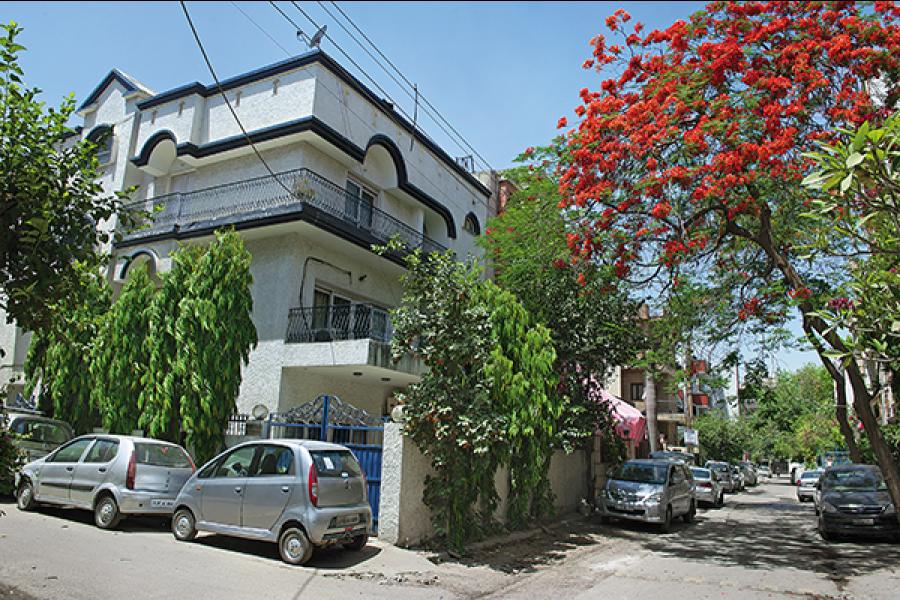
The eternal quest for a home of your own
The din of real estate statistics and prices might be overwhelming, but the emotions attached with buying your own house are far from lost
My father had grown up in a standalone house in his village. He has always had very fond memories of that place. But the family fell on hard times, and they had to sell off their property and move to the city. Ever since, my father always had a dream to live in a house like that once again. Buying a plot of land in Neral, and building our own small house there, was a wish fulfilment of sorts.”
Raghupathy Parmeshwaran had grown up in a 500-square feet one-bedroom-kitchen in Dombivli, suburban Mumbai. But the life-long wish of his father’s resulted in a rather impulsive, and happy, decision on Gudi Padwa in 2006-07. “My wife had gone out for the celebratory procession, and I was flipping though the newspaper when I saw an ad for plots on sale at Neral. My father and I just decided to go and take a look, but we ended up booking the plot then and there,” he laughs. “When my wife returned, I said, ‘This is the surprise Gudi Padwa gift!’”
The Parmeshwarans now have a two-storey bungalow on the Neral plot, which they visit often on weekends. “It is unfortunate that my mother passed away while the house was being built,” he adds. “But my father gets to stay in it.”
Buying a home has been a significant event in the lives of individuals and families down the ages. Homes are where memories are built or relived, where people let down new roots or nurture old ones; they are the confluence of aspirations and hopes; they are, often, what decide the course of the lives of the people who inhabit them.
“We lived in rented houses after moving to Mumbai,” says Ashoka Holla, 43, of the initial years of struggle in a new, big city. After moving from one rented home to another for 22 years (between 1977 and 1999), Holla bought a house in Thane (Mumbai’s neighbouring district) at the age of 27, with financial help from his father. “It was very exciting for us,” he recalls. There was finally a place to call their own. But, as Holla laughs and admits, he has been in a constant process of “upgrading” the homes in which he has lived.
The first Thane apartment was followed by another, a larger one in the same housing complex, for his family. That was followed by a brief stay in a rented apartment in Dadar, in order to be closer to his place of work in Worli, southern Mumbai. “I had changed jobs and was in a high-stress position, and the commute was very long,” he explains. Once he realised the benefits of a shorter commute, he bought his third apartment, this time in Parel, also in southern Mumbai. “In Mumbai, the shift is always in the opposite direction,” he says. “In other cities, people move towards the suburbs. In Mumbai, people start from the far suburbs and are constantly trying to move towards the centre of the city.” Towards the coveted ‘town’, as the southern part of the city is called in Mumbai.
Town is where most of the offices still are. “It’s also where all the infrastructure is,” adds Holla. “In the suburbs there has always been a problem of water and electric supply. That’s not the case in South Mumbai. In the suburbs, you have 80 percent water cuts, in town, it’s 20 percent.”
But Holla’s claim that Mumbaiites are always trying to move to the city’s centre does not really hold true for a lot of people. There are those who, instead of moving from the city’s centre to the suburbs, have moved out of the city altogether. And settled in Pune, for instance.
Nandita Rajasekhar is one such Mumbaiite to have taken flight. “I have been living in Pune for 10 or 11 years,” says the 37-year-old employee of Tech Mahindra, who bought herself a home last year, and is preparing to move into it this summer. “I would have bought a home a long time ago, but there are taboos attached with single women buying homes. There is always that concern that the guy you are going to marry is probably eyeing your house!”
But, once married, buying a home was not far behind. “I needed to own something of my own,” says Nandita. “This was not an investment. My main intent was to find a stable place, and not have the feeling of being unsettled every time I changed houses.” The fact that Nandita’s father had bought a house for the family when she was six years old has been one of the reasons why she, too, seeks a similar kind of stable environment. “My father worked at Mahindra & Mahindra, and the company had built apartments, which they offered to their employees at a discounted rate,” she remembers. “That was when we shifted from our rented home in Sion [in central Mumbai] to our own one-bedroom-kitchen in Malad [in suburban Mumbai].”
Now the owner of an apartment in Bavdhan, in suburban Pune, Nandita feels she has a better quality of life than in Mumbai. “People are more aware, more environment friendly in Pune,” she says. This sentiment is shared by Parmeshwaran as well, who is temporarily posted in Pune, and is living in the Kothrud area: “Pune is like being on ice.” And Mumbai? “It’s like being on fire!” he laughs. “In Pune, you have time for yourself. In Mumbai, you don’t. There, travelling for an hour to work is the norm.”
Nandita, however, adds that moving into a new city has its hiccups. “Pune is slow, and, initially, people were hostile,” she says. Things have improved, though, with more people renting out apartments, and a more cosmopolitan population moving in. But hostility need not be found only in a new city; you could find it even in a new neighbourhood in an old city. Holla says that moving into an expensive high-rise in the old, middle-class, mill-economy-dominated neighbourhood of Parel came with its appendages. “The apartment in which I live is in an old mill compound,” he says. “There was resistance from the local people when we moved in, because of the sharp socio-economic divide.” But now, he says, matters are more settled.
Holla’s experience in Parel is a factor that divides buyers on whether to purchase homes in new buildings and neighbourhoods, or in old and established neighbourhoods. Old buildings come with established ecosystems of domestic help, local grocery stores, laundry services and milkmen, which all add up to make life easier for a family, especially one with children. In a new building, that too in a new neighbourhood, it takes time for such an ecosystem to develop, making daily life a little difficult. But new buildings are ones in which new relationships are forged from scratch, whereas in old ones, relationships are often inherited, along with their share of squabbles, curiosities and prejudices.
But these old relationships are the very reason that keeps some families in the same place for decades. “Our neighbourhood has become much more crowded and congested than it was before,” says 40-year-old Saurav Wadhwa, a resident of East of Kailash in South Delhi, who lives in a standalone house built by his father in the early 1970s. “There are huge parking issues. But moving to a new development was not an option. Apartments in places like Gurgaon and Noida are very insular; they have no sense of history.”
Wadhwa adds that relationships that are built in these new housing complexes are largely need-based, since they are between people who live there only for the purpose of their jobs. And although housing societies in the National Capital Region (NCR) are making attempts at recreating the sense of a neighbourhood, Wadhwa feels these attempts are rather synthetic.
Homes, till a couple of decades ago, were meant to be for good, as were jobs. However, with the younger generations having to move, often frequently, with their jobs, buying or building a home in one city often does not make the same sense as it used to. “The younger generation might feel the need to ‘monetise’ the property and save on maintenance hassles as well, and therefore get a builder to pull down the standalone houses and construct apartments in its place,” says Wadhwa.
Buying a newly built property, however, has one practical advantage: Bank loans. Buying an older apartment in Pune was not an option for Nandita, “as the owners often ask for a significant part of the payment to be in cash. That is not an option for people like us who have salaried jobs”. The 80-20 model, wherein the owner makes a down payment of 20 percent of the property price and pays the remaining 80 percent through a bank loan, is what suits salaried home buyers.
That was how Mahua Gupta, a journalist with The Times of India in Mumbai, bought her apartment in Malad in 2009. The fact that she took a loan to buy her house while she was in her 30s is perhaps the biggest differentiating factor between her purchase and her father buying a house after his retirement in 2000. “My father had a transferable job, and I have grown up in Bhubaneswar,” says Gupta. “He decided on buying an apartment in Kolkata with the money he got post-retirement. He is old-fashioned, and did not feel the need to take a bank loan; he felt that the money he had saved up was good enough.” And although he owned two plots of land, when the time came to take a call, he opted out of the hassle of building a home, and bought a ready-made one instead.
“The hassle of building a home is perhaps more now than it was a few decades ago,” says Wadhwa, of South Delhi, who constructed a first floor to his father’s property three or four years ago. “It was difficult even then, but now the trust factor has gone down a lot.” Wadhwa elaborates on this by saying that construction workers today have a lot more choice, especially since there are lots of developer-led projects available for them to work at. Hence, getting good workmen is a constant concern. “Also, the quality of material they use is suspect. Earlier, you could trust them more with these factors,” adds Wadhwa.
But building your own home was never quite an easy task. Sam Balsara, chairman and managing director of Madison World and Madison Communications, recalls a family story that he has heard about the 85-year-old house in which he lives, built by his maternal grandfather in the Malcolm Baug housing colony in Jogeshwari, suburban Mumbai, when the neighbourhood was “a jungle”.
“When my grandfather built this house,” says 65-year-old Balsara, “there was no Jogeshwari station. The closest station was Andheri. The story goes that the garage here was not actually meant to house a car, but a tonga. The tonga would take my grandfather to Andheri station every morning, from where he would take the train to town to work. The tonga would wait there all day, and bring my grandfather back in the evening.”
The world outside Malcom Baug has changed, but Balsara prefers to stay in his ancestral house because of the space, freedom, privacy and independence it offers, despite the fact that it is quite a distance from most places. “I would not want to have fights with my neighbours over whether the wall should be painted green or white,” he says, when asked if he would prefer to stay in an apartment. Balsara seems to have inherited his love for open spaces from his grandfather, who had quit his earlier home in South Mumbai in search of wider horizons, and had sacrificed his close proximity to work for more space to breathe in.
Building homes in areas that are yet to develop has always remained challenging. Parmeshwaran, who built a house in Neral, says that it took three years to complete construction. “We did not take a loan, and so progress was slow,” he says. Even after construction was completed, it took another three years for the local government authority to build water supply lines. “We had electricity right from the beginning, but water had to be brought in by tankers. There was also a common borewell, which all residents could use.” But since the Parmeshwarans did not live there permanently, these hassles did not affect them in the same way as they would a local resident.
In this sense, some things have not changed at all over the decades. Meenakshi Mukherjee, 73, talks of the house her father built in the New Alipore area of South Kolkata in the early 1950s. “There were just three of four completed houses in the area at that time. There was a street, but no street lights. We would hang bulbs at the end of long bamboo poles and stick them out in front of the house. Our fathers would take turns each night to patrol the area,” she remembers. While there was a local vegetable market within walking distance, “if we had to get good fish, we would have to go to Jadubabur Bazar [about 5 kilometres away].” And there were foxes that would haunt the driveway at night.
In the current economy, buying (and selling) houses is a preferred form of investment for innumerable people, with little thought for the end-user who perhaps needs a house to live in, and not just park disposable money. While the cost of housing keeps increasing—squeezing the middle-class either into cramped apartments (like in Mumbai), or into the undeveloped swathes (like in the NCR)—the sentiments of buying a home have mostly remained unchanged through the decades. In a way, there are more options—bank loans, more housing projects, better amenities; and in a way, there are fewer—building your own house to live in is almost an impossibility. But at the end of it all, the quest remains for a home of your own.
(This story appears in the 13 May, 2016 issue of Forbes India. To visit our Archives, click here.)


















